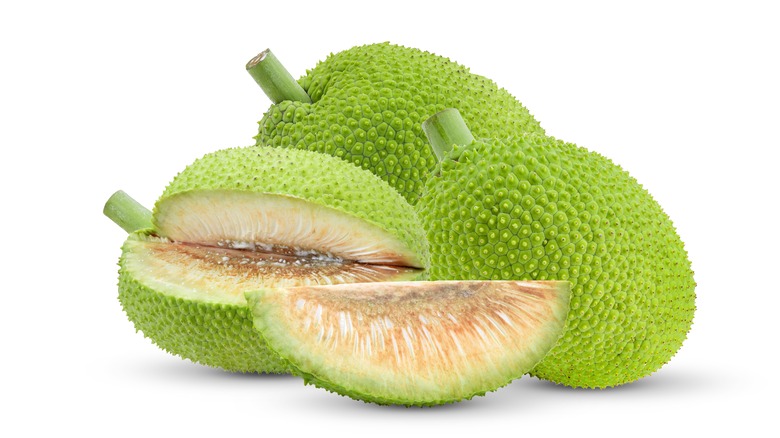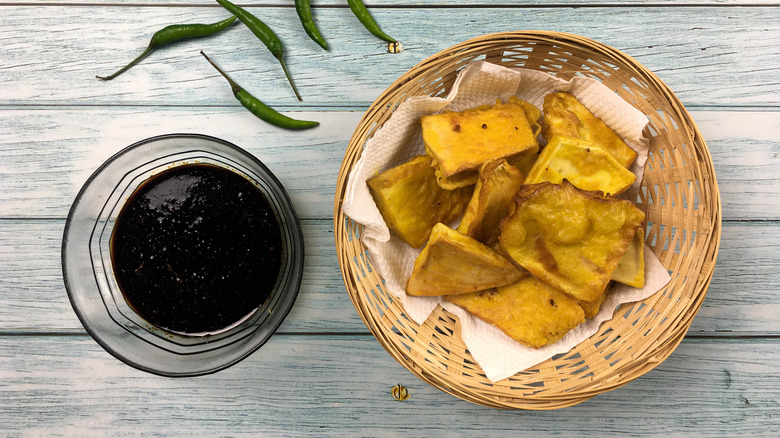New Study Reveals How Breadfruit Could Help Combat Global Hunger
If it feels like every day brings new headlines about the potentially catastrophic effects of climate change — and it pretty much does. It's likely that the food supply in the U.S. will be affected in a number of ways, from effects on corn, potatoes, rice, and even the supply chain and food prices. And when you look at the food supply for the world as a whole, the picture can be even scarier.
Rising temperatures across the globe, coupled with wildfires that threaten agricultural areas, are making food more expensive and adding to the problems caused by food insecurity. Science Daily tells us that researchers at Northwestern University predict that staple crops like corn, rice, and soybeans will be vulnerable to the effects of climate change, which is why they're studying other food sources to discover crops that may be less vulnerable and could serve as alternatives for our evolving food needs worldwide.
Breadfruit could be one of the solutions
The research conducted by Northwestern University identified breadfruit as a "neglected and underutilized species," which means that it has "potential to enhance climate resilience and overall sustainability of low-latitude agricultural systems" (via PLOS Climate). Crops that thrive in low-latitude regions are important, because, as the study also notes, tropical and sup-tropical food production is likely to suffer serious impacts from rising temperatures and extreme weather events due to climate change. The study indicates that the area suitable for breadfruit cultivation will decline only slightly in Southeast Asia and the Pacific Islands due to the effects of climate change. While the breadfruit range will decrease a bit more in Latin America and the Caribbean, the study identified sub-Saharan Africa as a place ideal for expanding breadfruit cultivation.
These studies provide hope for successfully adapting global food production in the face of climate change. One of the benefits noted by NPR in 2016 is that breadfruit can be eaten at different stages of the fruit's maturity. Ethnobotanist Diane Ragone told NPR, "When it's small and green, it tastes like an artichoke. When it's starchy and mature, it's the equivalent of a potato. When it's soft and ripe, it's dessert."
It's fitting that the fruit that's highest in carbohydrate content could be one of the ways to feed the world.

